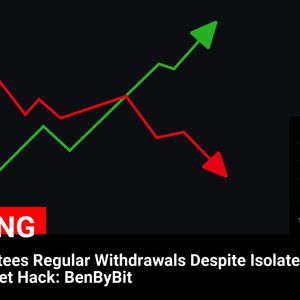In the ever-volatile Forex market, the EUR/USD pair is currently locked in a fierce battle, struggling to maintain its upward momentum. This week’s trading sessions are dominated by investor anxiety as they dissect the potential ramifications of former US President Donald Trump’s revived threats of tariffs on Eurozone imports. Will these Trump tariffs derail the Euro’s recent gains against the US Dollar ? Let’s dive into the factors influencing this crucial currency pair and what it means for traders. EUR/USD Grapples with Resistance Amid Tariff Fears The EUR/USD exchange rate is finding it difficult to decisively breach the psychological resistance level of 1.0500. This hesitation stems from a cloud of uncertainty surrounding the US Dollar’s near-term direction, coupled with renewed concerns about trade relations between the US and the Eurozone . Adding to the complexity, European Central Bank (ECB) policymaker Fabio Panetta recently voiced concerns about inflation potentially undershooting the ECB’s 2% target. This dovish stance from a key ECB official further muddies the waters for the Euro’s outlook. The immediate trigger for the current market unease is Donald Trump’s announcement on Friday regarding his intention to impose tariffs on imported vehicles, slated for around April 2nd. These Trump tariffs , with reciprocal measures expected, have sent ripples through the Forex market, particularly impacting the EUR/USD pair. Eurozone Under Tariff Threat: Key Impacts Market analysts anticipate that these potential levies will disproportionately affect major car exporters to the US, including: Germany Japan South Korea Data from the Observatory of Economic Complexity (OEC) highlights Germany’s significant exposure, with vehicle exports to the US valued at $24.3 billion in 2023. This substantial figure underscores the potential economic impact on the Eurozone’s largest economy. ECB’s Dovish Stance: Inflation Concerns in the Eurozone Despite the looming threat of Trump tariffs , ECB’s Fabio Panetta suggests a potentially limited or even slightly negative impact on Eurozone inflation. His analysis is based on several key assumptions: Euro Weakness: Tariffs and retaliatory measures could weaken the Euro. Global Slowdown: A broader economic slowdown would counteract inflationary pressures. China Dumping: China might redirect goods affected by US tariffs into European markets, further suppressing inflation. Panetta emphasized the more pressing risk for the Eurozone as “inflation falling below the 2% target over the medium term,” signaling a continued dovish monetary policy approach from the ECB. Euro Price Movements Today Let’s examine the Euro’s performance against other major currencies today: USD EUR GBP JPY CAD AUD NZD CHF USD 0.12% -0.11% -0.48% 0.07% -0.23% -0.30% 0.17% EUR -0.12% -0.07% -0.64% 0.05% -0.26% -0.32% 0.15% GBP 0.11% 0.07% -0.46% 0.12% -0.14% -0.25% 0.22% JPY 0.48% 0.64% 0.46% 0.54% 0.28% 0.38% 0.62% CAD -0.07% -0.05% -0.12% -0.54% -0.27% -0.37% 0.11% AUD 0.23% 0.26% 0.14% -0.28% 0.27% -0.06% 0.41% NZD 0.30% 0.32% 0.25% -0.38% 0.37% 0.06% 0.47% CHF -0.17% -0.15% -0.22% -0.62% -0.11% -0.41% -0.47% The table shows percentage changes of major currencies against each other. Base currency is picked from the left, quote currency from the top. US Dollar’s Temporary Stability: A Pause in Downward Trend? The recent upside attempts in EUR/USD are facing headwinds as the US Dollar appears to have found some temporary stability. After hitting a fresh two-month low on Friday, the US Dollar Index (DXY) is currently hovering around 106.80. Friday’s sharp sell-off in the US Dollar was triggered by disappointing US Retail Sales data for January, which contracted by 0.9%, significantly worse than the expected 0.1% decline. This weak data initially fueled expectations of a less hawkish Federal Reserve, weakening the US Dollar . However, the market’s focus quickly shifted back to the potential Trump tariffs . While investors initially anticipated immediate details of reciprocal tariffs following Trump’s social media activity, the lack of concrete plans has injected a degree of caution, providing some respite for the US Dollar . Federal Reserve and Economic Data in Focus Looking ahead, the US Dollar’s direction will be heavily influenced by speeches from various Federal Reserve officials this week. Their commentary will be crucial in shaping expectations regarding future monetary policy. Furthermore, traders will be closely watching the preliminary S&P Global Purchasing Managers Index (PMI) data for February, scheduled for release on Friday, for further clues about the US economic outlook. Technical Outlook for EUR/USD : Key Levels to Watch From a technical perspective, EUR/USD is struggling to overcome the 1.0500 resistance level. Despite this struggle, the pair maintains a bullish bias as it remains above the 50-day Exponential Moving Average (EMA) around 1.0430. The 14-day Relative Strength Index (RSI) is approaching 60.00, suggesting building bullish momentum. A sustained RSI reading above 60.00 could signal a stronger upside move. Key technical levels to monitor include: Support: February 10 low at 1.0285 Resistance: December 6 high at 1.0630 Retail Sales Data: Understanding its Impact The US Retail Sales data, released monthly by the US Census Bureau, is a critical economic indicator. It measures the total receipts of retail and food stores in the United States, providing insights into consumer spending, a major driver of the US economy. Key takeaways about Retail Sales data: Frequency: Monthly Source: US Census Bureau Indicator Type: Leading indicator of consumer spending Market Impact: Strong readings are generally bullish for the US Dollar , while weak readings are bearish. While strong retail sales typically boost the US Dollar , it’s important to consider external factors that can distort the data. Furthermore, the Retail Sales Control Group component is closely watched as it feeds into Personal Consumption Expenditure estimates, further amplifying its market significance. Conclusion: Navigating the Forex Turbulence The EUR/USD pair finds itself at a critical juncture, caught between Trump tariffs threats and fluctuating US Dollar sentiment. While Eurozone faces potential headwinds from trade tensions, the ECB’s dovish stance adds another layer of complexity. Forex traders must remain vigilant, closely monitoring economic data releases, central bank communications, and geopolitical developments to navigate this period of uncertainty and capitalize on potential trading opportunities. To learn more about the latest Forex market trends, explore our articles on key developments shaping currency market dynamics.



















